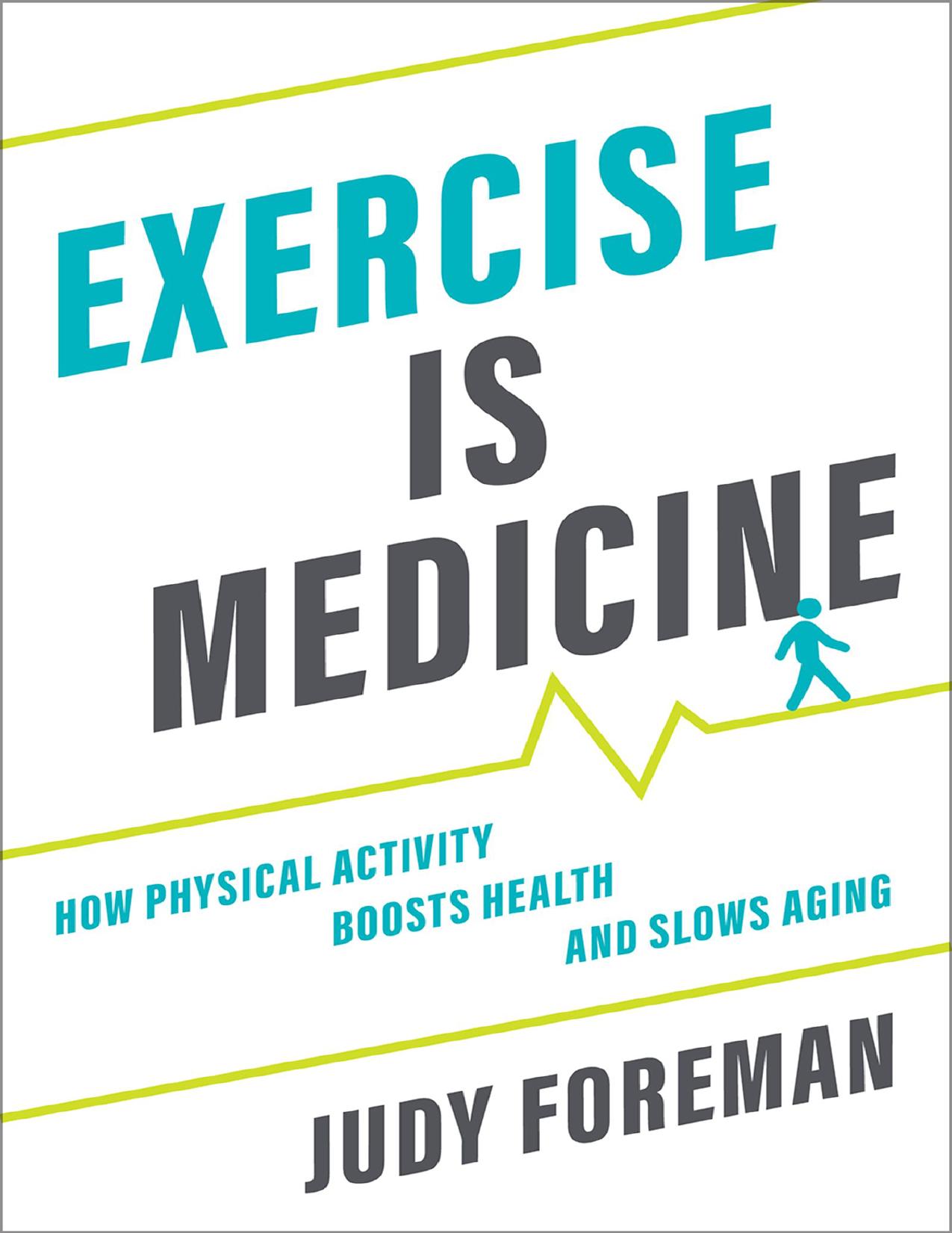Exercise is Medicine by Judy Foreman

Author:Judy Foreman
Language: eng
Format: epub, pdf
Publisher: Oxford University Press
Published: 2019-02-17T16:00:00+00:00
Chapter 16
Dodging Bullets
What Will Get You When
Like all other creatures on earth, we are dodging bullets all the time.
From the moment we are born until the last cancer cell, bacterium, heart spasm—or real bullet—does us in, we live in peril. In a very real sense, we’re lucky if we live long enough to age at all.
But in case you’re curious, here’s what’s likely to do you in. And when.
As a newborn American baby, the worst danger you face is being born with a congenital abnormality. By age one—and up until age 45—unintentional injury is the biggest risk of death, though starting in adolescence, homicide and suicide also begin to be big risks. In your mid-30s, cancer and heart disease begin to creep up as threats.
Once you hit 45, you’ve made it through a huge statistical minefield. But it’s also at midlife that your bad habits—smoking and Dante’s deadliest sins (sloth and gluttony)—start to catch up with you. (Unless you’re a Seventh Day Adventist. These religious folks don’t smoke or drink, are physically active, eat their veggies, and have strong social ties. It pays off: Their life expectancy is 86 years for men, 89 for women.)
For the rest of us, the picture begins to change between 45 and 54. Cancer suddenly becomes the biggest killer, followed by heart disease. This pattern holds from age 55 to 64, with cancer the biggest danger, followed by heart disease, and diseases triggered mostly by cigarettes: chronic lower respiratory disease (COPD, or chronic obstructive pulmonary disease), chronic bronchitis, and emphysema.
Even so, once you make it to 65, your odds of making to 100 keep getting better. Dangers still lurk, with heart disease being the biggest, followed by cancer, chronic respiratory disease, strokes, Alzheimer’s disease, diabetes, influenza, kidney failure, injury, and septicemia (blood poisoning).
By age 85 or 90, you’re a statistical rocket. Your biggest risks now are heart disease, cancer, and Alzheimer’s, in that order. But your chances of making it to 100 are terrific. (And if you’re a woman who has been able to have a baby later in life without technical assistance, you’ve probably got the great genes for an exceptionally long life.)
This is remarkable. One hundred years ago, most people didn’t make it past 50. Today, the average life expectancy at birth for Americans is 78.6 years, though this number has dipped slightly of late.
We’re living longer today mostly because of better sanitation, cleaner drinking water, refrigeration, better diets, antibiotics, other medical advances, and, especially, childhood immunizations. (After all, if many children die in their early years, the pool of people with a fighting chance to make it to old age is greatly diminished.)
Growing numbers of us—55,000 at last count—are making it to 100 and beyond. Two decades ago, it was half that. And the odds are still improving, thanks to better treatment of high blood pressure, better surgical techniques, and better treatments of some cancers. These advances have made it possible for many Americans who otherwise would have died in mid-life to make it to old age.
Download
This site does not store any files on its server. We only index and link to content provided by other sites. Please contact the content providers to delete copyright contents if any and email us, we'll remove relevant links or contents immediately.
When Breath Becomes Air by Paul Kalanithi(7295)
Why We Sleep: Unlocking the Power of Sleep and Dreams by Matthew Walker(5680)
Paper Towns by Green John(4193)
The Immortal Life of Henrietta Lacks by Rebecca Skloot(3843)
The Sports Rules Book by Human Kinetics(3616)
Dynamic Alignment Through Imagery by Eric Franklin(3512)
ACSM's Complete Guide to Fitness & Health by ACSM(3483)
Kaplan MCAT Organic Chemistry Review: Created for MCAT 2015 (Kaplan Test Prep) by Kaplan(3439)
Introduction to Kinesiology by Shirl J. Hoffman(3317)
Livewired by David Eagleman(3158)
The River of Consciousness by Oliver Sacks(3008)
Alchemy and Alchemists by C. J. S. Thompson(2924)
The Death of the Heart by Elizabeth Bowen(2921)
Descartes' Error by Antonio Damasio(2757)
Bad Pharma by Ben Goldacre(2745)
The Gene: An Intimate History by Siddhartha Mukherjee(2510)
Kaplan MCAT Behavioral Sciences Review: Created for MCAT 2015 (Kaplan Test Prep) by Kaplan(2501)
The Fate of Rome: Climate, Disease, and the End of an Empire (The Princeton History of the Ancient World) by Kyle Harper(2452)
The Emperor of All Maladies: A Biography of Cancer by Siddhartha Mukherjee(2446)
